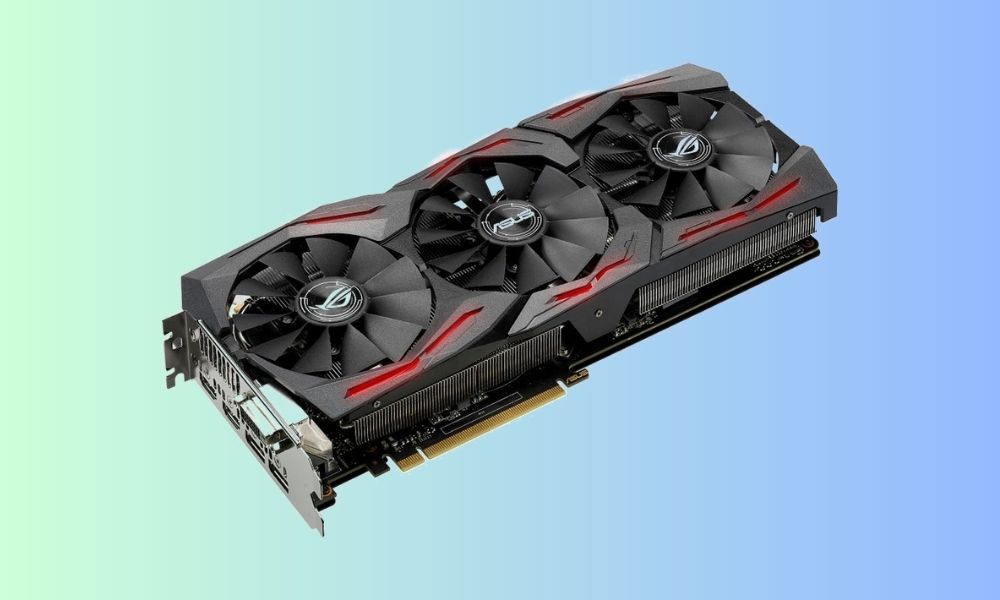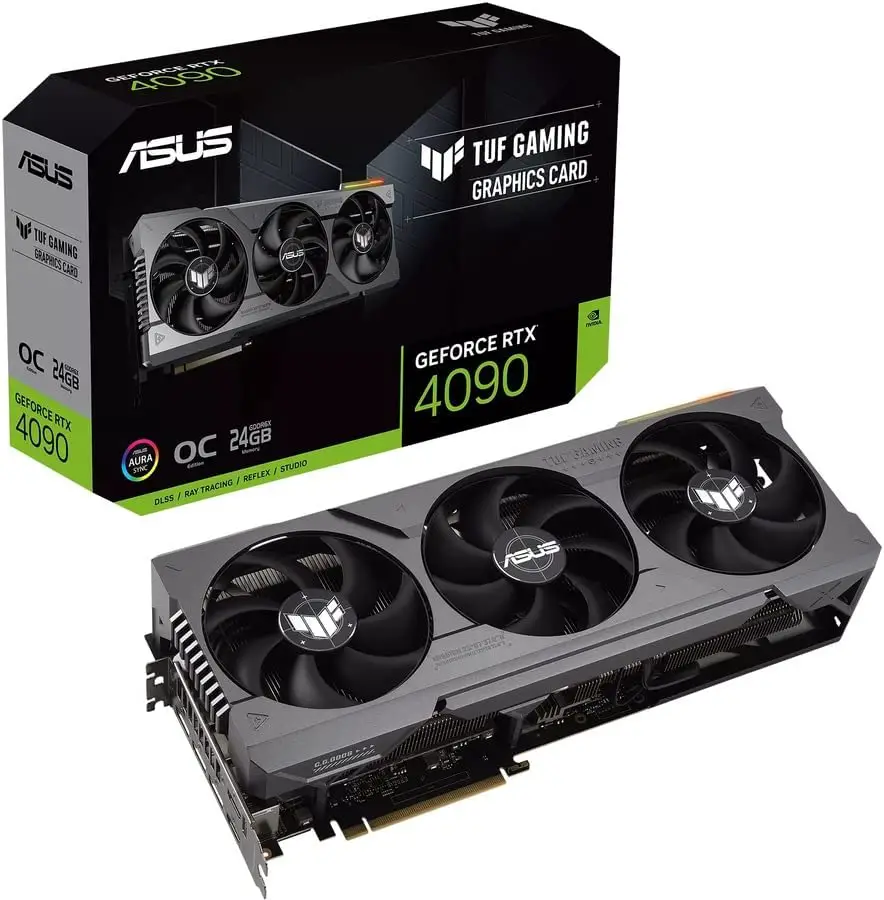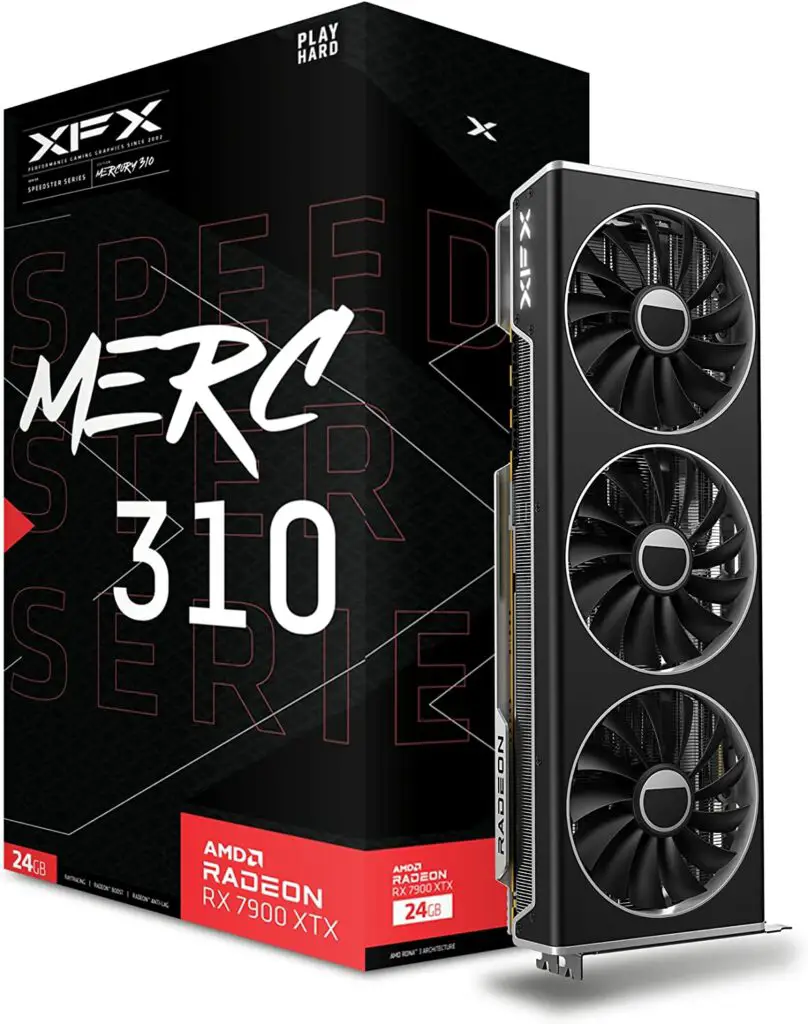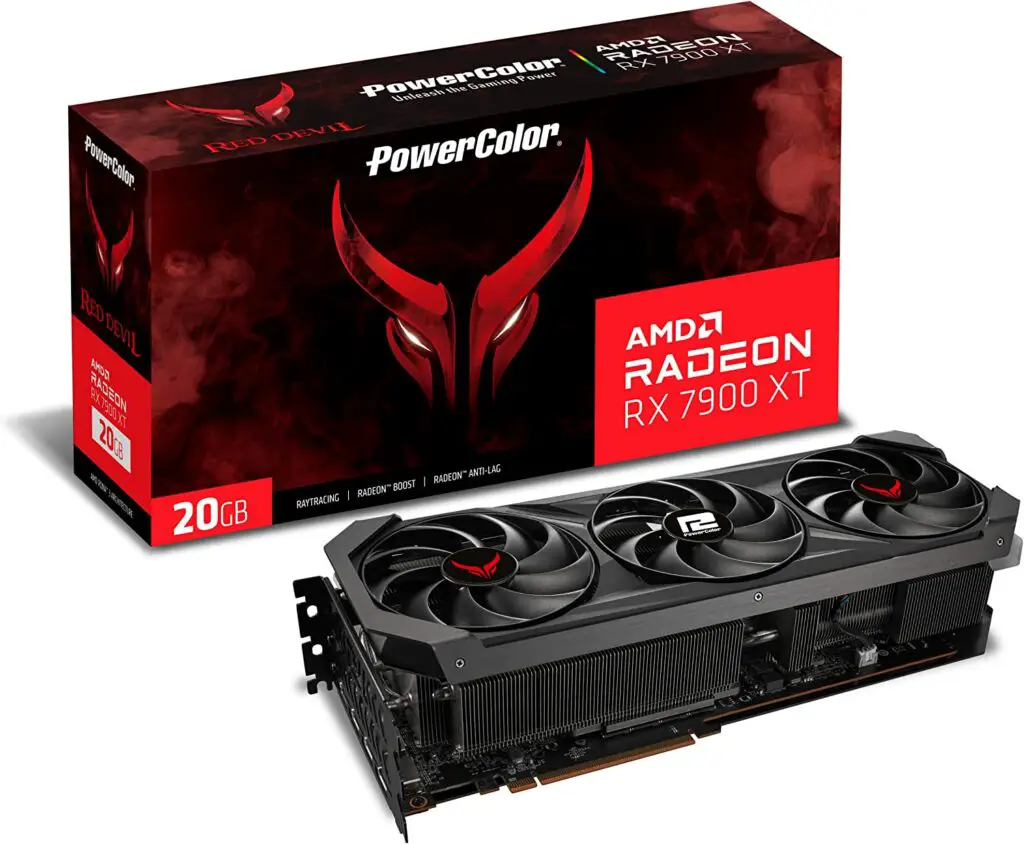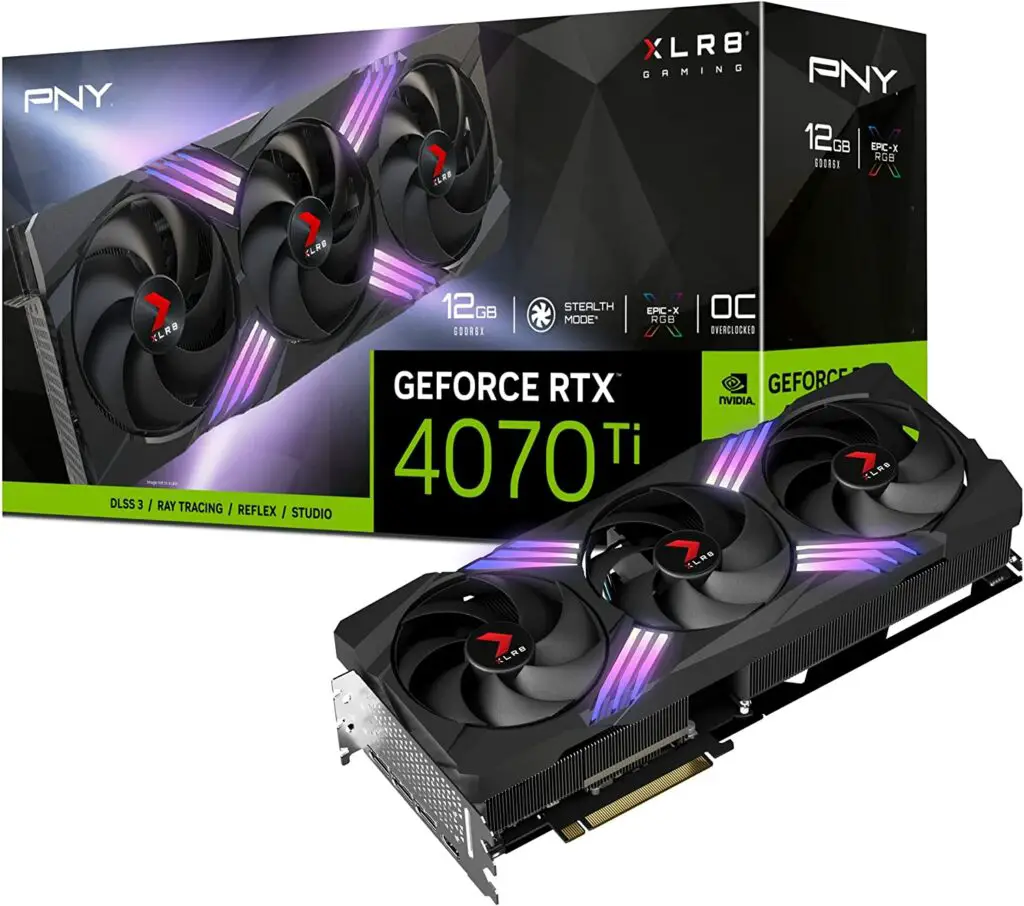Rendering is a computationally demanding process that requires the right tools to achieve optimal results. Whether you’re a professional 3D artist, architect, or designer, having the best graphics card for rendering can significantly impact your workflow and output quality. The GPU serves as the workhorse, handling complex calculations and rendering tasks with efficiency and speed.
In the vast landscape of GPUs, several options stand out as exceptional choices for rendering. These GPUs not only excel in rendering performance but also offer a myriad of features and capabilities that elevate the rendering process to new heights. From delivering breathtaking visuals to accelerating content creation workflows, these GPUs redefine what is possible in the realm of rendering.
One such remarkable contender is the Gigabyte GeForce RTX 4070 Ti Gaming OC 12G Graphics Card. With its powerful 3X WINDFORCE fans, 12GB 192-bit GDDR6X memory, and advanced architecture, it offers exceptional rendering performance that can handle even the most demanding projects. Beyond rendering, it also provides a host of other benefits and features, making it a top contender in the search for the best GPU for rendering.
Another notable option is the XFX Speedster MERC310 AMD Radeon RX 7900XTX Black Gaming Graphics Card. Equipped with 24GB GDDR6 memory and the cutting-edge AMD RDNA 3 architecture, this GPU delivers outstanding rendering capabilities. While rendering is its primary focus, it also offers additional uses and functions that extend its value beyond the rendering realm.
The MSI Gaming GeForce RTX 4080 16GB, with its powerful GDRR6X memory, Nvlink Tri-Frozr 3 cooling system, and Ada Lovelace Architecture, is another top contender in the best GPU for rendering category. Its rendering prowess is complemented by its ability to handle other tasks such as gaming, virtual reality, content creation, and machine learning applications.
These GPUs, along with others like the PowerColor Red Devil AMD Radeon RX 7900 XT and the PNY GeForce RTX 4070 Ti 12GB XLR8 Gaming, offer unique combinations of performance, features, and versatility that set them apart in the realm of rendering.
In this comprehensive guide, we will explore the best GPUs for rendering, delving into their rendering capabilities, other uses beyond rendering, and the pros and cons of each option. By examining these GPUs in detail, we aim to help you make an informed decision when selecting the best GPU for your rendering needs.
So, buckle up and prepare to discover the GPUs that will transform your rendering process, pushing the boundaries of what you can achieve and unlocking a world of creative possibilities. Let’s dive into the realm of the best GPUs for rendering and unleash the true potential of your artistic vision.
Also See: Best Motherboard for Rendering
Our recommended list of the Best GPU for Rendering
- ASUS TUF GeForce RTX 4090 OC Edition Gaming
- XFX Speedster MERC310 AMD Radeon RX 7900XTX
- MSI Gaming GeForce RTX 4080 16GB
- PowerColor Red Devil AMD Radeon RX 7900 XT
- PNY GeForce RTX 4070 Ti 12GB XLR8 Gaming
- MSI Gaming Radeon RX 6950 XT 16GB
1. ASUS TUF GeForce RTX 4090 OC Edition Gaming
Pros:
- High memory capacity
- Advanced architecture
- Efficient cooling system
- Overclocking capabilities
- Durability and reliability
Cons:
- Price
- Power consumption
- Size and compatibility
The ASUS TUF GeForce RTX 4090 OC Edition Gaming Graphics Card is a top-tier option for rendering tasks, featuring 24GB of GDDR6X memory, PCIe 4.0 support, HDMI 2.1a, and DisplayPort 1.4a.
The TUF-RTX4090-O24G-GAMING model is built with durability in mind, using military-grade components and a robust cooling solution, which includes a 2.7-slot design, MaxContact technology, and three Axial-tech fans.
The card also offers a GPU Tweak II utility for easy performance tuning and monitoring, as well as customizable RGB lighting.
The ASUS TUF GeForce RTX 4090 OC Edition offers exceptional performance for rendering tasks, thanks to its 24GB GDDR6X memory, advanced architecture, and efficient cooling system. Its high memory capacity and PCIe 4.0 support enable it to handle the most demanding rendering projects, while the OC Edition allows for increased performance through overclocking.
The cooling system of the ASUS TUF GeForce RTX 4090 OC Edition also plays a crucial role in its rendering performance. The GPU features a robust cooling solution, which includes a 2.7-slot design, MaxContact technology, and three Axial-tech fans.
This efficient cooling system ensures that the GPU can maintain optimal performance during long rendering sessions, preventing thermal throttling and ensuring consistent performance.
Overall, the ASUS TUF GeForce RTX 4090 OC Edition is an excellent choice for professionals and enthusiasts seeking top-tier rendering performance in a durable and reliable package.
Also See: – Best CPU for Rendering
2. XFX Speedster MERC310 AMD Radeon RX 7900XTX
Pros:
- High-performance capabilities
- Large memory capacity
- Efficient cooling system
- Support for ray tracing and FidelityFX Super Resolution (FSR)
- Competitive pricing
Cons:
- Power consumption
- Availability and demand
- Size and compatibility
The XFX Speedster MERC310 AMD Radeon RX 7900XTX Black Gaming Graphics Card features 24GB of GDDR6 memory and AMD RDNA 3 architecture, making it a top contender for rendering tasks. The RX-79XMERCB9 model also comes with a triple-fan cooling solution, ensuring optimal temperatures during heavy workloads.
The GPU can be utilized for running scientific and engineering simulations in fields such as physics, chemistry, and computational fluid dynamics. Its advanced architecture and high-performance capabilities make it suitable for handling complex calculations and simulations.
The XFX Speedster MERC310 AMD Radeon RX 7900XTX Black can be used for machine learning and artificial intelligence tasks, as its powerful processing capabilities and large memory capacity enable it to handle large data sets and complex computations.
The XFX Speedster MERC310 AMD Radeon RX 7900XTX Black is a versatile graphics card capable of handling a wide range of workloads beyond rendering, including gaming, VR, video editing, 3D modeling, machine learning, and scientific simulations. Its impressive performance makes it an excellent choice for users who require a powerful GPU for various applications.
3. MSI Gaming GeForce RTX 4080 16GB
Pros:
- High gaming performance and smooth gameplay
- Suitable for virtual reality (VR) experiences
- Excellent for content creation tasks like video editing and 3D modeling
- Capable of handling machine learning and AI applications
- Supports ray tracing and DLSS technology
- Multi-monitor and 4K display support
- Overclocking capabilities for enhanced performance
- Customizable RGB lighting for personalization
Cons:
- Higher price point compared to lower-tier GPUs
- Power consumption may be higher during demanding workloads
- Availability may be limited and subject to market demand
The MSI Gaming GeForce RTX 4080 16GB GDRR6X graphics card features a 384-bit memory interface, making it a powerhouse for rendering tasks. The Ada Lovelace Architecture and Tri-Frozr 3 cooling system ensure peak performance and low temperatures. The Gaming X Trio model also includes RGB Mystic Light for customizable aesthetics.
The GPU supports multiple monitors and high-resolution displays, enabling users to set up expansive workstations or enjoy immersive gaming experiences on multiple screens. It can handle resolutions up to 4K, delivering sharp and detailed visuals.
The MSI Gaming GeForce RTX 4080 16GB is designed to deliver exceptional gaming performance. With its advanced architecture and 16GB GDDR6X memory, it can handle the latest games at high resolutions and maximum graphics settings, providing smooth gameplay and stunning visuals.
Apart from rendering, the MSI Gaming GeForce RTX 4080 16GB is highly capable in content creation tasks such as video editing, 3D modeling, and animation. Its powerful architecture and ample memory enable efficient processing of complex projects, accelerating rendering times and enhancing productivity.
In conclusion, the MSI Gaming GeForce RTX 4080 16GB excels not only in rendering tasks but also in gaming, virtual reality, content creation, machine learning, and AI applications. Its advanced features, overclocking capabilities, and support for high-resolution displays make it a versatile GPU for various uses and functions beyond rendering.
4. PowerColor Red Devil AMD Radeon RX 7900 XT
Pros:
- Exceptional gaming performance
- High-quality cooling solution for efficient heat management
- Robust build and design
- Wide range of outputs for multi-monitor setups
- Suitable for VR applications
- Excellent compute capabilities for various workloads
- Supports high-resolution gaming
Cons:
- Higher price compared to some competing GPUs
- Power consumption can be relatively high
- Availability may be limited
- Potential larger physical size, requiring sufficient space in the PC case
The PowerColor Red Devil AMD Radeon RX 7900 XT Graphics Card is a high-performance option for rendering tasks. It features a triple-fan cooling solution and customizable RGB lighting, adding both efficiency and aesthetics to your build. Its advanced architecture and large memory capacity make it a top choice for demanding workloads.
The PowerColor Red Devil RX 7900 XT can handle gaming at high resolutions, such as 1440p or even 4K, providing sharp and detailed visuals. It allows gamers to enjoy games with enhanced graphics and take full advantage of high-resolution monitors.
The GPU’s powerful compute capabilities make it suitable for various GPU compute workloads beyond rendering. It can accelerate tasks in fields like scientific computing, machine learning, data analysis, and cryptography.
The PowerColor Red Devil RX 7900 XT features a robust cooling solution, which keeps the GPU temperature in check during intensive workloads, ensuring optimal performance and longevity. Additionally, it is designed to operate at lower noise levels, providing a quieter computing experience.
the PowerColor Red Devil AMD Radeon RX 7900 XT offers exceptional gaming performance, compatibility with virtual reality, content creation capabilities, multi-monitor support, and powerful compute capabilities. Its cooling system and quieter operation further enhance its overall appeal.
These features make it a versatile GPU suitable for gaming, VR, content creation, multi-monitor setups, and GPU compute workloads beyond rendering.
5. PNY GeForce RTX 4070 Ti 12GB XLR8 Gaming
Pros:
- Exceptional gaming performance for smooth and immersive gameplay
- Advanced AI-driven features for enhanced visuals and performance
- Powerful architecture for content creation and rendering tasks
- Efficient hardware encoder for seamless live streaming and broadcasting
- Multi-monitor support for increased productivity and multitasking
- AI-assisted applications for intelligent tasks and automation
- High-resolution entertainment experience with stunning visuals
Cons:
- Higher price point compared to lower-tier GPUs
- Availability may be limited and subject to market demand
The PNY GeForce RTX 4070 Ti 12GB XLR8 Gaming Verto Epic-X RGB Triple Fan Graphics Card features DLSS 3 technology, which improves performance by using artificial intelligence to upscale lower resolution images. The card also comes with a triple-fan cooling system and customizable RGB lighting, making it not only efficient but also visually appealing.
The PNY GeForce RTX 4070 Ti 12GB XLR8 Gaming enhances high-resolution entertainment experiences. It delivers stunning visuals and smooth playback, allowing you to enjoy 4K movies, streaming content, and immersive virtual reality with exceptional detail and realism.
The PNY GeForce RTX 4070 Ti 12GB XLR8 Gaming accelerates content creation workflows, benefiting tasks such as video editing, 3D modeling, animation, and graphic design. Its powerful architecture and ample memory capacity enable faster rendering and smooth performance in complex projects.
The GPU’s hardware encoder allows for seamless live streaming and broadcasting experiences. Whether you’re sharing your gameplay or creating live content, the GPU efficiently handles video encoding, ensuring high-quality streams.
The PNY GeForce RTX 4070 Ti 12GB XLR8 Gaming is a truly versatile graphics card that excels in various areas. From delivering exceptional gaming performance and AI-driven features to enhancing content creation, live streaming, productivity, and high-resolution entertainment, this GPU truly stands out. Its robust architecture and advanced capabilities make it the perfect choice for a wide range of tasks beyond rendering.
6. MSI Gaming Radeon RX 6950 XT 16GB
The MSI Gaming Radeon RX 6950 XT 16GB GDDR6 graphics card features a 256-bit memory interface, making it an excellent choice for rendering tasks. The card comes with Triple Torx 4.0 fans and FreeSync technology, ensuring optimal performance and smooth gameplay. The RX 6950 XT Gaming X Trio 16G model also includes RGB Mystic Light for customizable aesthetics.
The GPU’s powerful architecture and ample memory capacity make it well-suited for content creation tasks, including rendering, video editing, 3D modeling, and animation.
The GPU incorporates power-saving technologies, providing optimal power consumption during both idle and intensive workloads, reducing energy costs.
The MSI Gaming Radeon RX 6950 XT 16GB offers excellent performance in both gaming and creative workloads. Its advanced architecture, high memory capacity, and efficient cooling system enable it to handle demanding rendering tasks with ease, while its FreeSync technology ensures smooth gameplay at high resolutions.
Best Graphics Card for Rendering Buying Guide
When purchasing the best GPU for rendering, it’s important to consider several specific factors that can greatly impact your rendering performance and overall experience. These factors include:
- Rendering Performance: Look for a GPU that excels in rendering tasks, with a high number of CUDA or compute cores, ample memory bandwidth, and a powerful architecture specifically optimized for rendering workloads. Consider the GPU’s rendering benchmarks and performance metrics to ensure it meets your requirements.
- Memory Capacity and Bandwidth: Rendering large and complex scenes requires significant memory resources. Opt for a GPU with sufficient memory capacity, preferably with fast GDDR6 or GDDR6X memory, to handle the demanding memory requirements of rendering applications.
- CUDA or OpenCL Support: Check if the GPU is compatible with the rendering software you plan to use. Some rendering engines rely on CUDA cores (NVIDIA) or OpenCL (AMD) for accelerated performance. Ensure your GPU supports the required technology for optimal compatibility and performance.
- Thermal Design and Cooling: Rendering workloads can put a heavy load on the GPU, generating considerable heat. Look for GPUs with robust cooling solutions, such as multiple fans, large heatsinks, and efficient thermal designs, to ensure optimal performance and prevent thermal throttling.
- Power Requirements: Consider the power consumption of the GPU and ensure that your power supply unit can provide sufficient wattage to support its needs. Some high-end GPUs may require additional power connectors, so check if your power supply has the necessary connectors available.
- Software Compatibility: Ensure that the GPU is compatible with the rendering software you intend to use. Some rendering applications may have specific requirements or optimizations for certain GPU architectures or brands. Verify that your chosen GPU is fully supported by your preferred rendering software.
- Additional Features: Look for additional features that can enhance your rendering workflow, such as hardware-accelerated ray tracing, AI-driven features like DLSS, real-time viewport rendering, and multi-GPU support. These features can significantly improve rendering performance and overall efficiency.
- Budget and Value: Determine your budget and assess the value offered by different GPUs. Consider the price-performance ratio, long-term usability, and future upgrade possibilities. Select a GPU that strikes the right balance between your budget and the features it offers.
By carefully evaluating these specific factors, you can make an informed decision and choose the best GPU for rendering that aligns with your rendering needs, software compatibility, budget, and long-term goals. Remember to prioritize the factors that are most critical for your specific rendering workflows to ensure a seamless and efficient rendering experience.
Conclusion
In the realm of rendering, the choice of GPU plays a crucial role in achieving exceptional results. Throughout this exploration of the best GPUs for rendering, we have uncovered a selection of powerful contenders that go beyond expectations, pushing the boundaries of what is possible in the realm of rendering.
The Gigabyte GeForce RTX 4070 Ti Gaming OC 12G Graphics Card, with its remarkable rendering performance and a range of features, stands out as a top choice for professionals seeking the best GPU for rendering. Its advanced architecture and cutting-edge cooling system ensure smooth and efficient rendering, while its additional capabilities in gaming and content creation make it a versatile asset in various creative pursuits.
The XFX Speedster MERC310 AMD Radeon RX 7900XTX Black Gaming Graphics Card also presents a compelling option, showcasing its prowess in rendering while offering additional uses and functions. Its impressive memory capacity and the power of the AMD RDNA 3 architecture make it a force to be reckoned with in the rendering realm.
Meanwhile, the MSI Gaming GeForce RTX 4080 16GB emerges as a formidable contender, combining the power of its GDRR6X memory, innovative cooling system, and Ada Lovelace Architecture to deliver outstanding rendering performance. Its ability to excel in gaming, virtual reality, content creation, and other applications further solidifies its place among the best GPUs for rendering.
These GPUs, accompanied by the PowerColor Red Devil AMD Radeon RX 7900 XT and the PNY GeForce RTX 4070 Ti 12GB XLR8 Gaming, present a diverse array of options, each with its unique blend of rendering capabilities, additional uses, and benefits.
In the quest for the best GPU for rendering, it is essential to consider factors such as rendering performance, versatility, cooling efficiency, power consumption, and overall value. Each professional’s specific requirements and preferences will guide their ultimate choice.
Whether you are a 3D artist, architect, or designer, selecting the best GPU for rendering will empower you to unleash your creativity and achieve stunning results. With these GPUs at your disposal, you can bring your visions to life, navigate complex rendering tasks with ease, and embark on a journey of limitless artistic possibilities.
Remember to carefully weigh the pros and cons of each GPU, considering their rendering capabilities, other uses beyond rendering, and how they align with your specific needs. The best GPU for rendering is the one that seamlessly blends power, versatility, and innovation, elevating your rendering workflow to new heights.
Now armed with the knowledge of the best GPUs for rendering, it is time to embark on your creative endeavors with confidence. Choose your GPU wisely, harness its power, and unlock the true potential of your rendering projects. Let your imagination soar and make your artistic visions a reality with the best GPU for rendering.
FAQs
Is GTX or RTX better for rendering?
When it comes to choosing between GTX and RTX GPUs for rendering, the decision depends on several factors and considerations.
GTX (GeForce GTX) GPUs are primarily designed for gaming but can also perform well in rendering tasks. They offer excellent value for their price and can handle rendering workloads effectively. GTX GPUs generally provide good performance in rendering applications and are suitable for those on a tighter budget.
On the other hand, RTX (GeForce RTX) GPUs are specifically built with advanced features that enhance rendering capabilities. They incorporate dedicated hardware for real-time ray tracing, AI-driven features like DLSS (Deep Learning Super Sampling), and improved performance in rendering applications. RTX GPUs excel in providing high-quality visuals and accelerated rendering workflows, making them an attractive choice for professionals who prioritize rendering performance and advanced features.
The inclusion of real-time ray tracing in RTX GPUs allows for more realistic lighting, shadows, and reflections in rendered scenes. This can greatly enhance the visual quality of rendered images and videos. Additionally, AI-driven features like DLSS can boost rendering performance by using machine learning algorithms to upscale lower-resolution content while maintaining image quality.
Ultimately, the choice between GTX and RTX GPUs for rendering depends on your specific needs, budget, and the complexity of your rendering tasks. If you require advanced rendering features, real-time ray tracing, and AI-driven enhancements, an RTX GPU may be the better choice. However, if you prioritize cost-effectiveness while still achieving good rendering performance, a GTX GPU can be a suitable option.
Consider the rendering software you plan to use, the rendering techniques you employ, and your budget constraints when deciding between GTX and RTX GPUs. It’s recommended to review benchmarks and performance comparisons for the specific models you are considering to make an informed decision that aligns with your rendering requirements.
What is the best GPU for 4K rendering?
The best GPU for 4K rendering would be the Gigabyte GeForce RTX 4070 Ti Gaming OC 12G Graphics Card. With its powerful architecture, ample memory capacity, and advanced features, this GPU is well-suited for handling the demands of 4K rendering.
The Gigabyte GeForce RTX 4070 Ti Gaming OC 12G Graphics Card offers exceptional rendering performance, allowing for smooth and efficient processing of high-resolution content. Its 3X WINDFORCE fans and efficient cooling system ensure optimal thermal management, preventing overheating during intense rendering tasks.
Additionally, the GPU’s 12GB 192-bit GDDR6X memory provides ample resources for handling large and complex 4K rendering projects. This allows for faster rendering times and smooth playback of high-resolution content.
Moreover, the GPU’s advanced architecture and features, including real-time ray tracing and AI-driven enhancements, contribute to the overall visual quality of rendered scenes in 4K. Real-time ray tracing adds realistic lighting, shadows, and reflections, while AI-driven features enhance image quality and performance.
Considering its rendering performance, cooling capabilities, memory capacity, and advanced features, the Gigabyte GeForce RTX 4070 Ti Gaming OC 12G Graphics Card stands out as the best choice for 4K rendering. It provides the necessary power and capabilities to handle the demanding requirements of rendering content at 4K resolution.
Which GPU is best for rendering, NVIDIA or AMD?
Both NVIDIA and AMD offer excellent GPUs for rendering tasks. The best choice will depend on your specific needs, budget, and preferences.
Do I need a high amount of memory for rendering tasks?
A higher memory capacity can improve performance in rendering tasks, especially for more demanding projects. Consider your specific workload requirements when choosing a GPU.
How important is the cooling system for a GPU used for rendering?
A good cooling system is essential for a GPU used for rendering, as it helps maintain stable performance during long rendering sessions and prevents overheating, which can cause damage to the GPU.
Are customizable RGB lighting features necessary for a rendering GPU?
Customizable RGB lighting is not necessary for a rendering GPU, but it adds a personal touch to your build and can enhance the overall aesthetics of your setup.
How does DLSS 3 technology affect rendering performance?
DLSS 3 technology, available on certain NVIDIA GPUs, uses artificial intelligence to upscale lower resolution images in real-time, improving performance in gaming and potentially offering benefits in rendering tasks as well.
